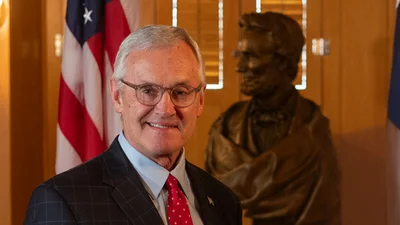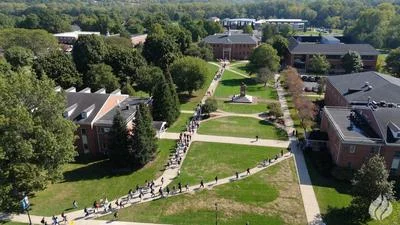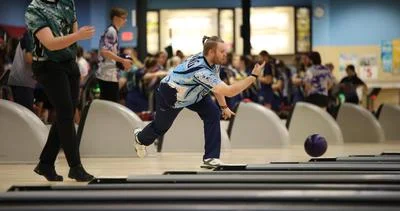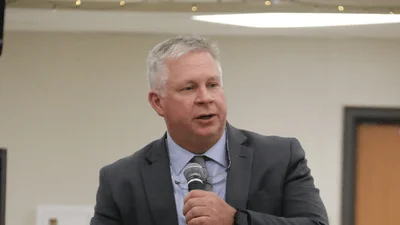Intelligence is at work in the robotics lab at Danville Junior High School, and, no, it’s not the artificial kind.
Four young men – three eighth-graders and a seventh-grader – are testing, modifying and re-testing the robot they will take to Texas May 1-3 to participate in what is billed as “the largest robotics competition in the world.”
Their focus is on motor speeds, gear ratios, and the drive train – all of the programming elements that will improve the speed and maneuverability of their robot.
The team – self-named “Cereal Killers” – includes eighth-graders Jacob Byers, Evan Crider and Nick Mosher and seventh-grader Nelson Troyer. They were awarded the Teamwork Challenge second place award at the Ohio State Middle School Robotics Competition at Marion on March 2, which qualified them for the VEXIQ Middle School World’s Championship in Dallas.
“The team worked hard to earn this opportunity. They take their work very seriously,” said science teacher Marie Mosher, the robotics adviser who also is Nick’s mother.
Hundreds of teams from around the world will compete in Texas, and all will use robots constructed of materials provided by VEX Robotics, which sells educational robotics equipment and programs. On its website, VEX describes its products and skills competitions by proclaiming, “It’s as close to real-world engineering as a student can get.”
The Cereal Killers built their robot from scratch, using VEX-authorized materials. As they prepare for the world competition, they are supported by a second Danville team, the “Hot Tots,” which won the Think Award and the Skills Champion Award at the state competition but didn’t qualify for the trip to Texas. Hot Tots members are eighth-graders Carter Wittel and Storm Moore and seventh-graders Logan Joseph and Riley Malone.
An example of the students’ ingenuity was the mechinum wheel which the Hot Tots installed beneath their robot, a move that caught some state-level competitors by surprise.
“It allowed the robot to move laterally, as well as forward and backward,” Carter said.
Robots compete on a six-by-eight-foot game board. Each team has a driver who has one minute to use a joystick to maneuver the robot around the board to pick up small plastic cubes of different colors from a supply zone and deposit them in three stacking zones called goals. The cubes have different point values depending on their color. Points are earned by the number and color of cubes deposited in goals within the minute.
The robot that the Cereal Killers will take to Dallas is not the one they used at the state competition.
“We built a new robot for Texas,” Crider said. “We watched videos online to study the highest performing robots.”
Marie Mosher emphasized that all schools must use only VEX materials. The competitive difference depends on how teams use those materials to construct and program their robots.
“All of the motors are the same size. Students are permitted to use six total motors on their robot,” she said. “All robots must pass pre-competition inspection and pass through a gate to assure the robot’s height and width are within limits.”
Throughout the testing, the team keeps a journal of what has worked and what hasn’t. That task has been handled by Nick Mosher, who carefully records changes made to the robot and their impact on its performance.
“The robot sweeps up the cubes and stores them in a basket inside before moving to the goal and unloading the cubes,” Byers said. “We have been tweaking the drive train and adjusting the gear ratios to get the speed we need.”
Part of the competition in Texas, as it was in Ohio, involves an “alliance,” in which Danville will be randomly matched with another school to work together against the clock. The combined score then will depend on the other school’s abilities as well as Danville’s.
Marie Mosher said the Cereal Killers need to raise $12,000 to $15,000 for the trip to Texas. That includes $1,800 for registration alone.
“Students will be traveling in the Danville Schools SUV,” she said. “We will be leaving on Monday, April 29 and will arrive in Texas on Tuesday, April 30. Students will begin competing on Wednesday, May 1, and will conclude competition Friday, May 3. The trip will incur costs for lodging, fuel, registration and other expenses.”
Tax-deductible donations to support the students may be sent to Attn: Marie Mosher, Robotics Adviser, PO Box 30, Danville, Ohio 43014. Checks should be made payable to Danville Local Schools. Online donations may be made on the Danville Local Schools district page by selecting the tickets and donations tab. Requests for donation receipts should be made by email to tonya.mickley@danvilleschools.org. Any funds not used for the trip will be diverted to the school robotics account.
Earlier, Mosher wrote a grant application called “Robotics for Everyone,” which netted $5,000 from the Ohio STEM Learning Network in conjunction with Battelle. Those funds are being used to purchase more equipment and allow all eighth-grade students to participate in a unit on robotics.
The robotics program will expand to Danville High School next year. Mosher will teach the course.
The Knox Educational Service Center (ESC) partners with Danville and other county school districts to develop, implement and operate cooperative, shared educational services.






